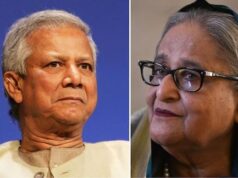ASEAN And India Will Draw Closer With Regional Economic Partnership
The 34th ASEAN summit, in Bangkok, Thailand from June 20 to 23, focused on building a people-centric community in the region. The chairman’s statement issued at the end of the summit, “emphasized the importance of advancing partnership for sustainability to achieve a people-centered, people-oriented and forward-looking ASEAN Community that leaves no one behind in the rapidly changing regional and global environment.”
Leaders of the ASEAN members shared a vision to advance partnership for sustainability and cooperation to relieve disasters. They also set a target of completing talks for the Regional Comprehensive Economic Partnership (RCEP) by the end of 2019 so as to rally international trade, and all parties agreed to make more efforts to achieve this goal.
The RCEP is a trade pact between the 10 ASEAN members with India, Japan, South Korea, Australia, New Zealand and China. It aims to erase tariff and non-tariff barriers to establish a free trade zone.
If successful, it will cover over 3 billion people and their combined GDP will reach around $21 trillion, accounting for about 30 percent of world trade. It will bring more abundant trade and investment opportunities and huge benefits for the international market.
In comparison the Japan-led Comprehensive and Progressive Agreement for Trans-Pacific Partnership only covers roughly 13 percent of the world’s GDP. There are three reasons why ASEAN will push the RCEP.
The RCEP will become an important mechanism to push Asian regional economic integration. ASEAN will cooperate with India and other countries to facilitate the RCEP negotiations, helping Asia to participate in global economic governance and further building a regional value chain in Asia.
Individually, none of the 10 ASEAN members can affect Asian and international affairs. However with help of the RCEP, ASEAN will have the fourth -largest economy (PPP terms ) behind China, India and Japan in Asia, greatly consolidating and developing ASEAN’s leading role in regional cooperation. The ASEAN Economic Community was established in 2015 and the connection between the 10 members has since then been strengthened.
Due to their diverse political, cultural and religious systems, some differences between the countries are inevitable. But thanks to the efforts of all parties, around 80 percent of the RCEP negotiations have been completed. The stakeholders have achieved a consensus to promote free trade liberalization and facilitation.
The RCEP aims to upgrade the free trade agreement between ASEAN members and other countries and groupings in the region like BIMSTEC and even SAARC in the deal, in order to build a high-quality free trade zone, altering the status quo in which there are too many rules.
One of the key concerns at the summit was the US trade war with China and India. The US is increasingly worried about trade imbalance. However, there is no space for unilateralism to develop in the region, and multilateralism and free trade represent the general trend.
No country can afford unilateralism and hegemony; especially in Asia. India, Japan and China are economic giants in themselves and only cooperation can further strengthen the economic activity of the region.
The ASEAN’s summit also reiterated its strong commitment to “concluding the RCEP negotiations within 2019 to reinvigorate international trade.” It also expressed concern over “the unabating tide of protectionism and anti-globalization sentiments that continue to plague the global economy and put the multilateral trading system under threat.”




